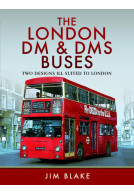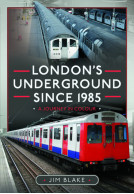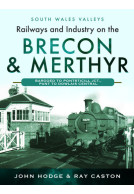London Transport Buses in the 1960s (ePub)
A Decade of Change and Transition
Imprint: Pen & Sword Transport
File Size: 167.7 MB (.epub)
ISBN: 9781473867871
Published: 30th August 2022
| Other formats available - Buy the Hardback and get the eBook for £1.99! | Price |
|---|---|
| London Transport Buses in the… Hardback Add to Basket | £25.00 |
Just as life in Britain generally changed dramatically during the 1960s, so did London Transport's buses and their operations. Most striking was the abandonment of London's trolleybuses, once the world's biggest system, and their replacement by motorbuses. Begun in 1959 using surplus RT-types, it was completed by May 1962 using new Routemasters, designed specifically to replace them. They then continued to replace RT types, too.
Traffic congestion and staff shortages played havoc with London Transport's buses and Green Line coaches during the 1960s, one-man operation was seen as a remedy for the latter, shortening routes in the Central Area for the former. Thus the ill-fated "Reshaping Plan" was born, introducing new O.M.O. bus types. These entered trial service in 1965, and after much delay the plan was implemented from September 1968 onwards. Sadly, new MB-types, also introduced in the Country Area, soon proved a disaster! Unfortunately, owing to a government diktat, Routemaster production ended at the start of 1968, forcing LT to buy "off-the-peg" vehicles unsuited to London operation and their in-house overhaul procedures. The decade ended with the loss of LT's Country Area buses and Green Line coaches to the National Bus Company.
Photographer Jim Blake began photographing London's buses towards the end of the trolleybus conversion programme in 1961 and continued dealing with the changing scene throughout the decade. He dealt very thoroughly with the "Reshaping" changes, and many of the photographs featured herein show rare and unusual scenes which have never been published before.
Featured by
The Broad Gauge Society
"This is a book which most London enthusiasts will be pleased to add to their collection."
West Somerset Railway Association
As featured in
Evergreen
At first glance this is a book of high quality photographs with extended captions but reading it reveals it to be far more than that. Your reviewer was a bus spotter in the London Transport area in the 1960s but this book gives a very detailed account of how London Transport was changing at the time, most of which was unknown to me. It is obvious that the writer has an extensive knowledge of the subject, partly from working for London Transport for a time. There is information about routes, allocations of buses to routes, including problems encountered with certain bus types. There is also mention of mechanical changes, body swaps and some service vehicles.
London & North Western Railway Society
The photographs are not only finely reproduced but are all precisely dated with locations and with information about the routes and precise dates when certain routes were changed. Some photographs are of rare situations, perhaps showing a bus on trial, accidents or short lived routes. Even details like the different driver seating positions on MB class buses is mentioned. The author even took photographs of new buses at the manufacturers’ premises.
The book is best read as a fascinating story of London Transport evolution throughout the 1960s but also sometimes relates to surviving buses and services up to the present day.
It is a well written account of 1960s London bus services, enriched by the author’s skilfully taken and selected photographs. With such extensive coverage throughout the London Transport, Green Line and Country Areas one is left in awe of the detailed recording of information.
This book is hard to put down and is strongly recommended.
There are good books on London buses but this is in a class above. Happy memories for those of a certain age.
James Simmonds
About Jim Blake
JIM BLAKE was born in December 1947 and brought up in Islington, North London. As did most young lads then, he soon developed an interest in railways, but also London's trams, trolleybuses and buses since North London's last two tram routes ran near his home, at the heart of London Transport's trolleybus system. His interest developed into transport photography in 1961 and he took over 100,000 photos before retiring his cameras in 2015. He still lives in North London today.





















